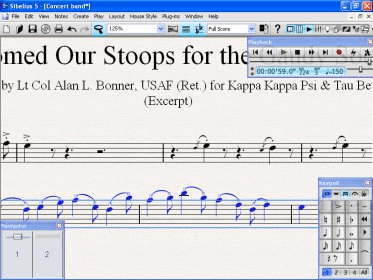
Maurice Ravel and Claude Debussy were at work developing and performing their impressionistic music. From 1910–1913, Igor Stravinsky premiered his innovative and revolutionary ballets The Firebird, Petrushka, and The Rite of Spring. In 1909, Arnold Schoenberg pushed for more and more dissonant and chromatic harmonies in his Five Pieces for Orchestra, Op. Meanwhile, various landmark works in other genres had presented further radical developments. The 1910s were a decade of change for the symphonic form, which had by then existed for well over a century. Sibelius commented on his revision: "I wished to give my symphony another – more human – form. The 1919 version seems more straightforward, monumental and classical, and also cleared away some digressions and ornaments. The first version of the new symphony kept much of his familiar orchestral style (consonant sonorities, woodwind lines in parallel thirds, rich melodic development, etc.) but also shows some similarities with the more modernist Fourth Symphony, featuring a few bitonal passages. The final version, which is the one most commonly performed today, was premiered again by the Helsinki Philharmonic, conducted by Sibelius, on 24 November 1919. The second version, only part of which survives, was first performed by the Orchestra of Turun Soitannollinen Seura in Turku exactly one year later. The original version of the work was premiered by the Helsinki Philharmonic Orchestra, conducted by Sibelius on 8 December 1915, his 50th birthday. The symphony was originally composed in 1915 it was revised in 19.ĭuring its composition, Sibelius wrote of the symphony in his diary, "It is as if God Almighty had thrown down pieces of a mosaic for heaven's floor and asked me to find out what was the original pattern." Climaxes are huge and heavy and detail well-focused.Sibelius was commissioned to write the symphony by the Finnish government in honour of his 50th birthday, 8 December 1915, which had been declared a national holiday. The simple microphone techniques used project the orchestra with honesty and impact. They have the advantage of dark, articulate lower strings, delightfully grainy bassoons, trombones as black as a pine forest and brilliant, blazing horns. The Pittsburgh Orchestra may lack velvety plushness – but that is no disadvantage in a Sibelian soundscape. The recorded balance is ideal, the solo violin superbly `present’ but not unnaturally forward. The excellent performance of the Violin Concerto is a treasure! The soloist, Julian Rachlin, plays with breadth a fluent, rhapsodic freedom and a wonderful vitality and bite. There is a cogency about this cycle, a seamless consistency widely varied scenes viewed from the same vantage-point. It also seems to hold at its core a stillness a still, silent centre around which musical planets move and coalesce. Maazel’s objective and patient approach is ideally suited to these enigmatic and inscrutable works. There are moments when the broad land, sea and skyscapes open out into music that seems to belong to the transcendent vastnesses of deep-space (especially in the 4th and 7th Symphony).


These landscapes are unpopulated, often inhospitable, bleak and cold. Sibelius’s symphonies aren’t `theological’ (like Bruckner’s and, in a different way Mahler’s too). Maazel has a direct, objective manner in Sibelius and the natural, open sounding recording of the Pittsburgh Orchestra is suited to the music. Concerto in D Minor for Violin and Orchestra, Op. Allegro molto – Allegro assai – Doppio piu lentoĠ1. 105: Allegro molto moderato – Allegro moderato – Presto – Adagio – Largamentemolto – AffettuosoĠ1. Andante ma non troppo – Allegro energicoĠ2.


 0 kommentar(er)
0 kommentar(er)
